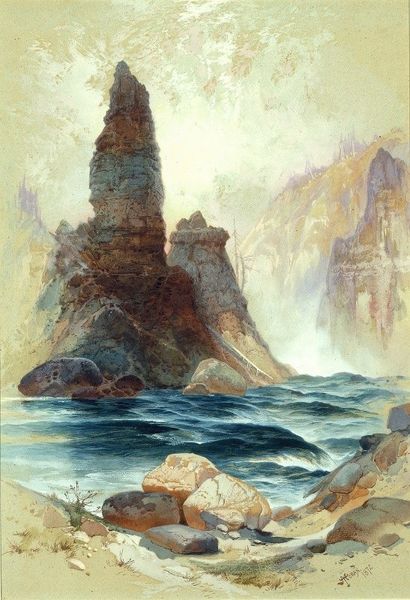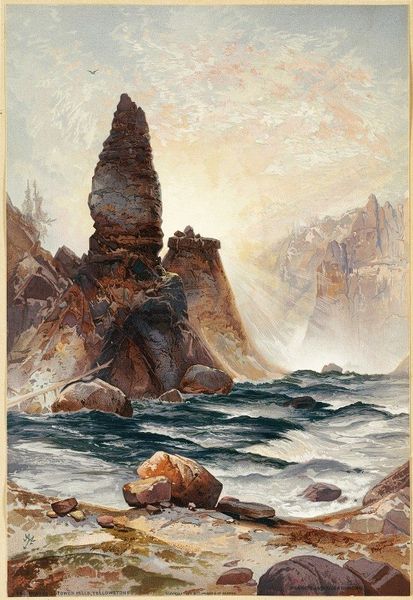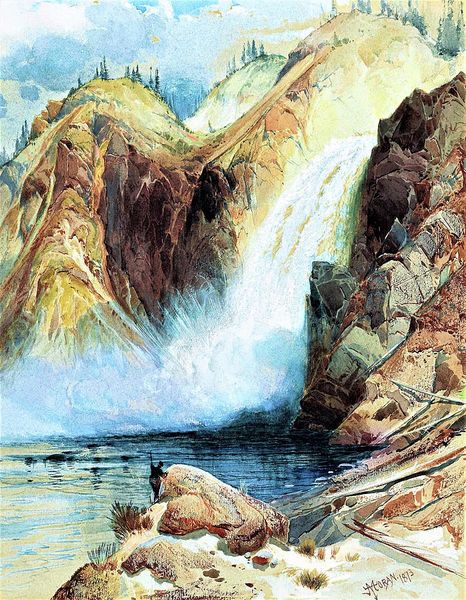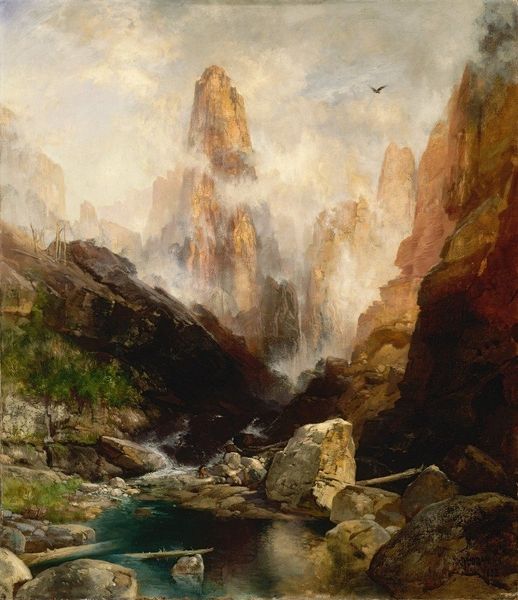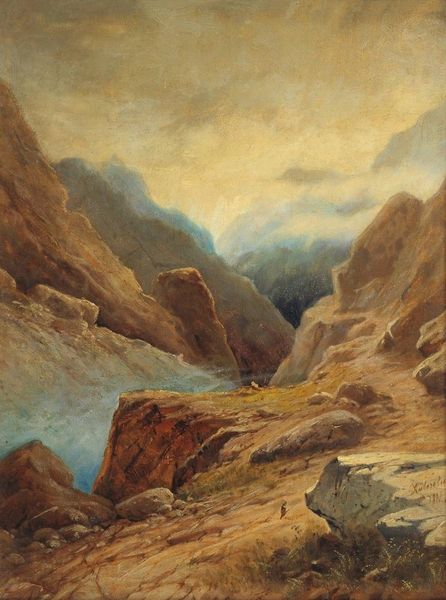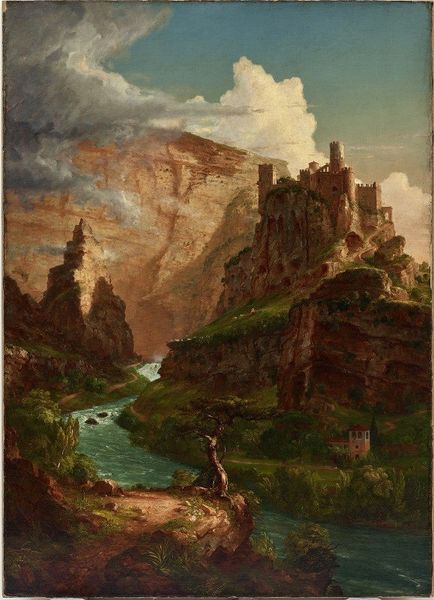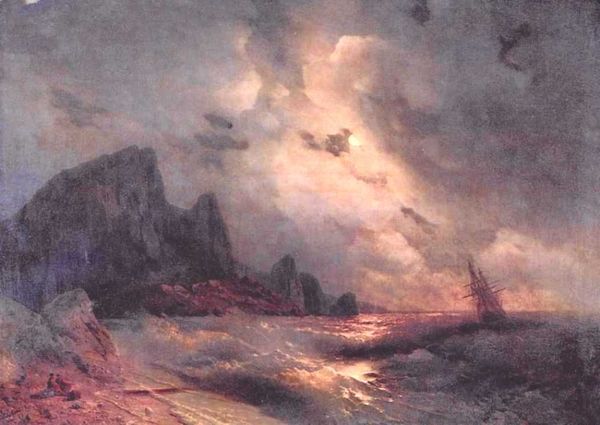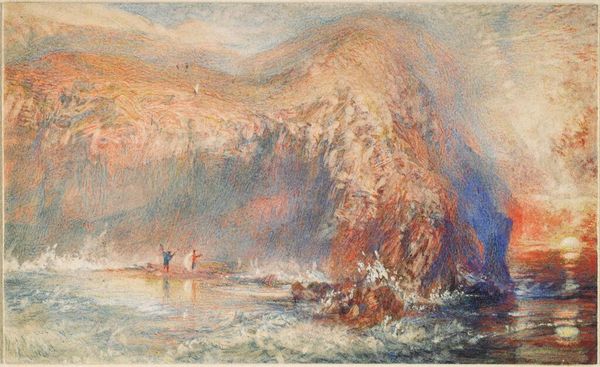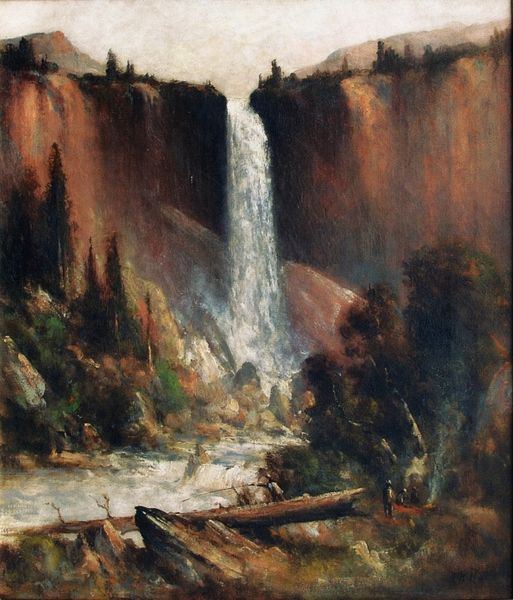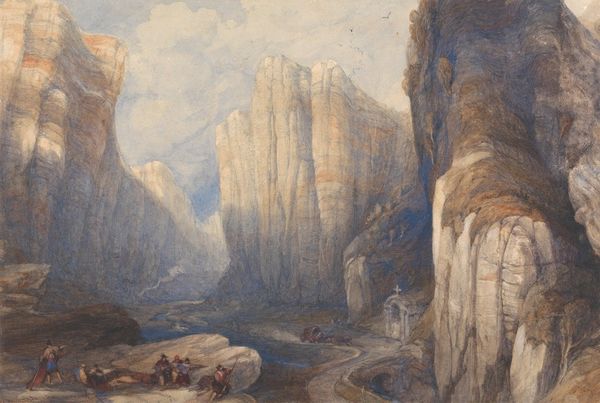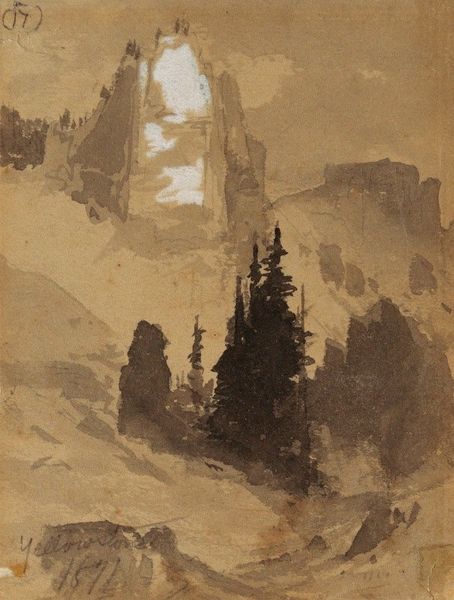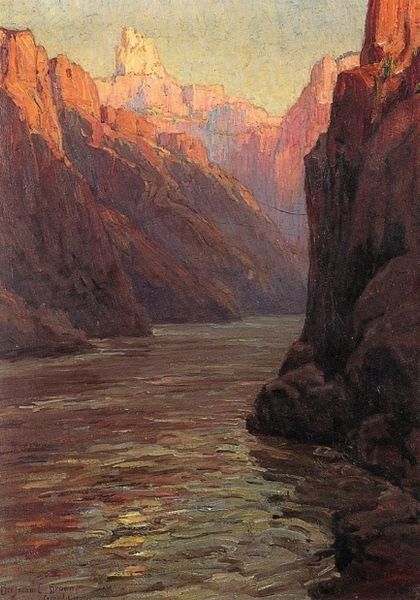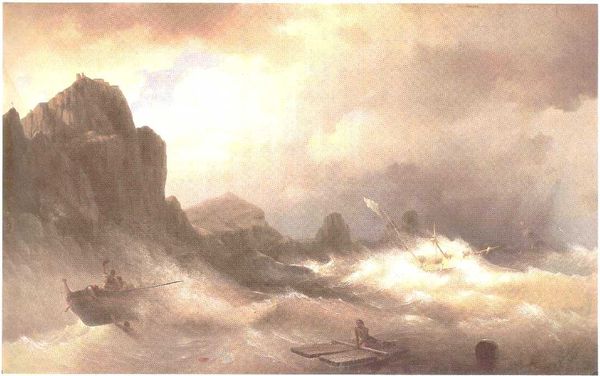
Copyright: Public Domain: Artvee
Editor: This is Thomas Moran's "Tower at Tower Falls, Yellowstone," from 1872. It's a watercolor, and there’s something really awe-inspiring about it – the sheer scale of the rocks compared to the water. What do you see in this piece? Curator: Well, what strikes me is the political context surrounding this work. Moran created this during a time when the American West was being "discovered" and aggressively promoted. Consider how images like these played a vital role in shaping public perception and support for the creation of national parks like Yellowstone. It's less about the literal landscape and more about the promotion of a national identity rooted in this landscape, would you agree? Editor: I hadn’t really considered it that way, but that makes sense. So, the painting wasn’t just about capturing beauty; it was about influencing policy and national sentiment? Curator: Precisely. Think about the influence that these idealized visions had on decisions made about land use, resource management, and the displacement of indigenous populations. The 'tower' becomes symbolic not just of nature's grandeur, but also of the nation's ambitions. Do you see now how the perspective we take changes the entire dialogue around this painting? Editor: Definitely. It's much more than just a pretty landscape painting. It is now clear the images played a massive part in how we treated nature as a resource to be capitalised upon and consumed. It almost feels like we are viewing something as raw as Tower Fall through a political lens here, in more ways than one! Curator: I agree and with hindsight, understanding context gives a lot more meaning to a piece like this!
Comments
No comments
Be the first to comment and join the conversation on the ultimate creative platform.
